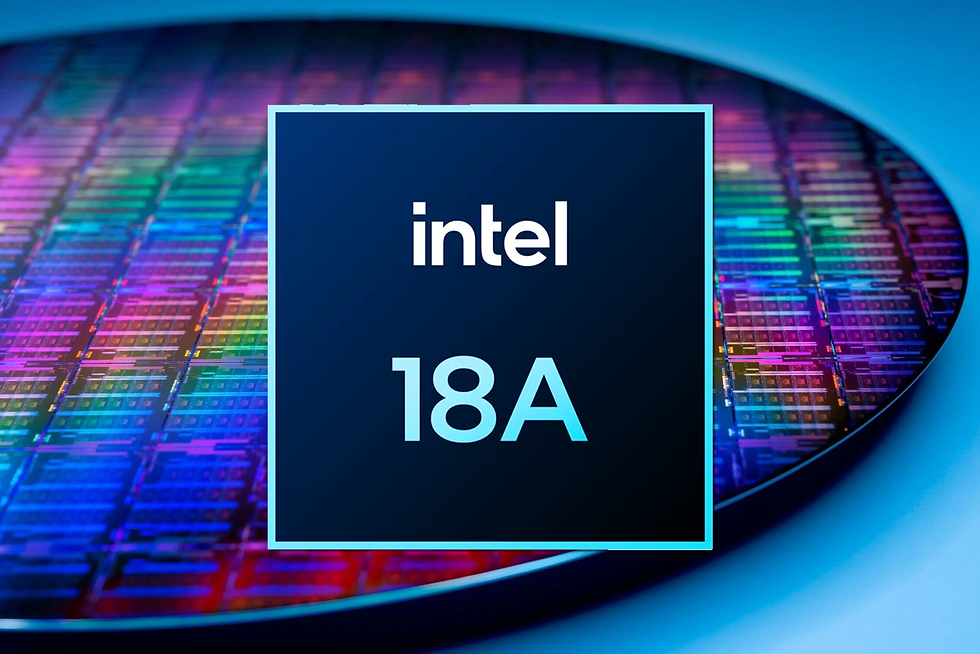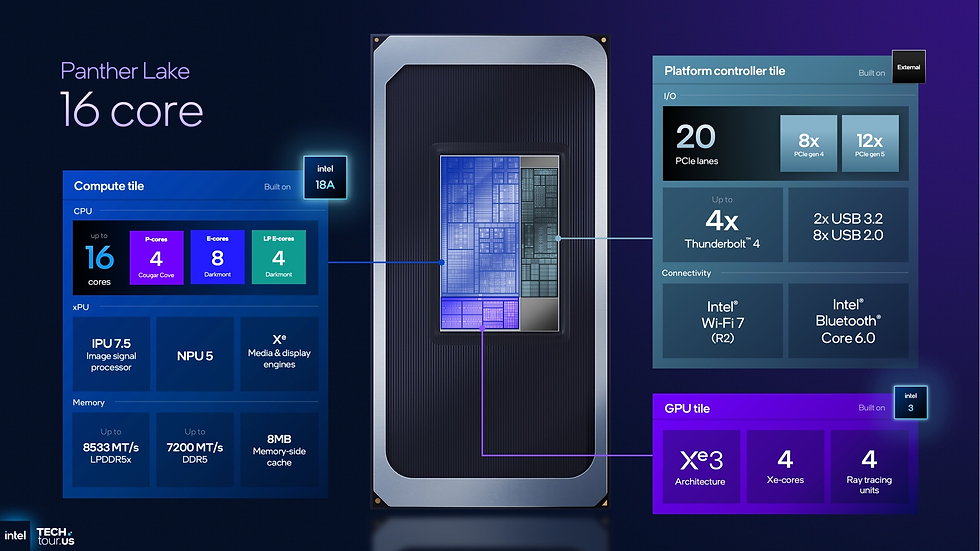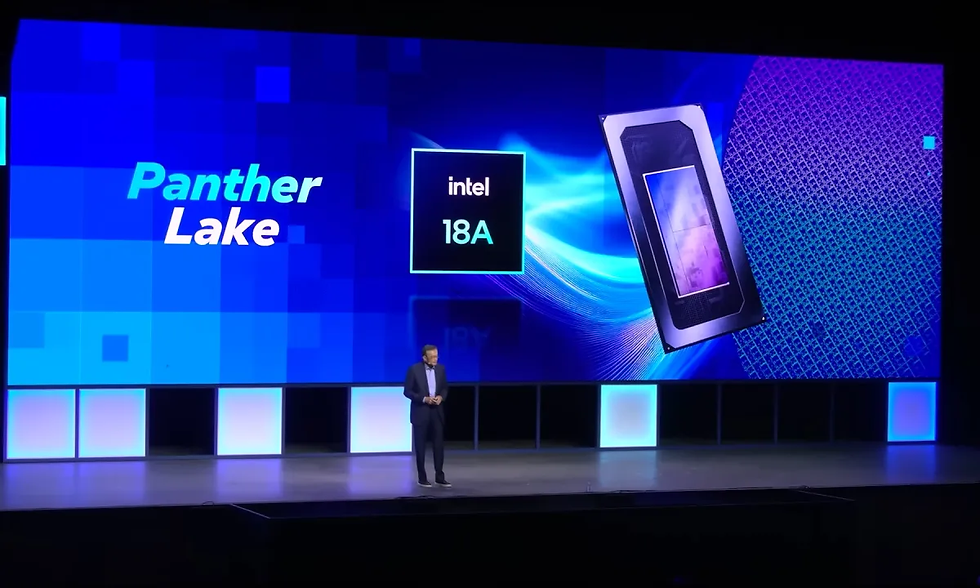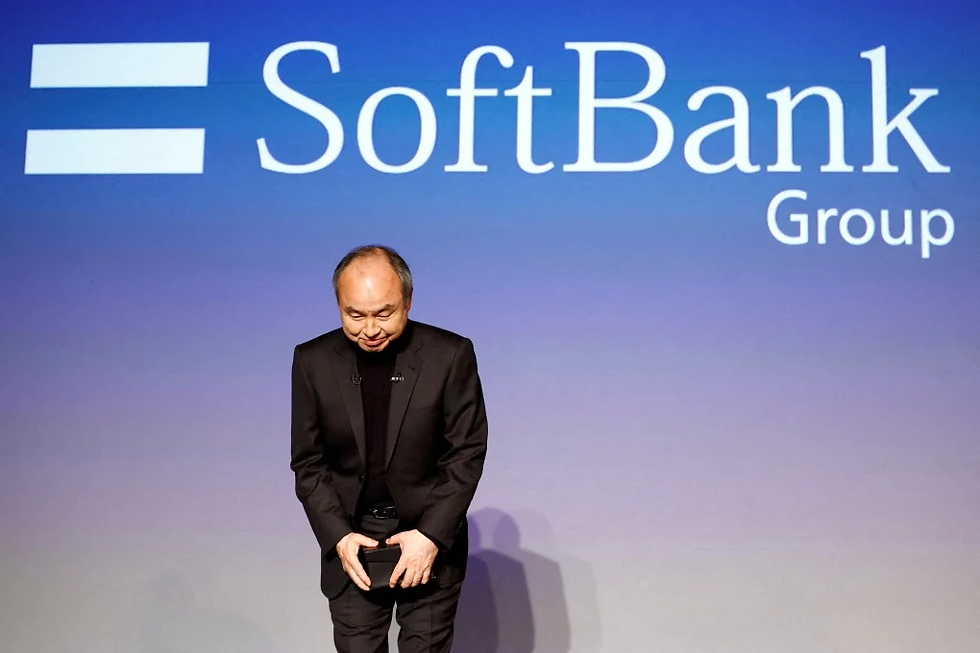Inside Intel’s 18A Node: RibbonFET, PowerVia, and the Architecture Behind Panther Lake
- Aisha Washington

- Oct 9
- 9 min read

Why Intel 18A, RibbonFET, PowerVia and Panther Lake matter
A short primer on the stakes for client chips and AI PCs
Intel’s 18A is a major process-node announcement that pairs RibbonFET (gate-all-around transistors) with PowerVia (backside power delivery) to target better performance-per-watt and density for upcoming chips. For non-specialists, that sentence summarizes two very different kinds of engineering change: one at the transistor level (how individual switches behave) and one at the package-and-routing level (how power reaches those switches). Together they set the foundation for higher sustained performance in thermally constrained devices like thin laptops.
Intel has tied Panther Lake to this roadmap and positioned it as the company’s first “AI PC” architecture. That matters because on-device AI workloads—local inference, low-latency features, privacy-sensitive processing—are power- and efficiency-sensitive. Panther Lake aims to combine architectural changes with 18A’s transistor and power-delivery upgrades so client systems can run AI features without sacrificing battery life or thermal headroom.
Early messaging and coverage present optimistic engineering guidance: Intel and media cite up to about a 25% peak performance uplift or roughly 36% lower power for comparable circuits on 18A versus earlier Intel nodes. Those numbers are node-level projections—not finished product benchmarks—but they do explain why Panther Lake and 18A have become focal points for Intel’s next client-generation promises.
RibbonFET and PowerVia explained

How gate-all-around transistors and backside power change the chip blueprint
At the heart of 18A are two named innovations: RibbonFET and PowerVia. Each addresses a different, persistent problem in modern silicon design.
RibbonFET is Intel’s implementation of a gate-all-around (GAA) transistor. In simple terms, a transistor is a switch whose ability to turn on and off reliably depends on how well the gate electrode controls the channel where current flows. FinFETs—which wrap the gate partially around a thin “fin”—have been the dominant geometry for years. GAA goes further: the gate surrounds the channel on all sides, improving electrostatic control and reducing leakage. That improved control translates into either higher switching speeds at the same power or the same performance at lower power—critical for battery-powered devices where every milliwatt counts.
PowerVia is a redesign of how power is delivered across the chip. Traditionally, power and signal routing share the front-side metal layers. PowerVia moves the primary power-delivery network to the wafer’s backside, separating power planes from the densely packed signal routing on the front side. That separation reduces front-side congestion, lowers voltage-drop (IR drop) on critical nets, and lets designers route signals more efficiently.
insight: RibbonFET improves transistor switching and leakage, PowerVia clears the front side for denser routing and steadier power — they are complementary, not redundant.
For Panther Lake, Intel pairs these process features with architecture-level changes aimed at on-die AI inference and client workload efficiency. The better transistor control of RibbonFET helps enable higher clocking or lower voltage operation of CPU cores and accelerators; PowerVia helps sustain those higher clocks for longer by reducing power-distribution losses and easing thermal hotspots. Put another way, RibbonFET helps the switches work better; PowerVia helps them get cleaner, steadier electricity.
Key takeaway: RibbonFET tackles transistor physics; PowerVia addresses system-level power distribution. Together they make sustained, efficient AI and client performance more achievable in thin-and-light form factors.
What Intel 18A promises for Panther Lake performance

Node-level projections and what they mean for real devices
Intel’s public statements and independent coverage distill the 18A promise into accessible metrics: up to ~25% peak performance improvement or about ~36% power reduction compared with prior Intel nodes for “similar circuits ported to 18A.” Those figures are useful for architects and system designers as a starting point when estimating what a new generation might achieve, but they come with important caveats.
First, these are node-level projections—not final product benchmarks. They are comparisons of equivalent circuits scaled to the new process characteristics. In practice, final device performance depends on multiple variables: chip microarchitecture, clocking choices, thermal design power (TDP) targets, memory subsystem, and the software stack. Tom’s Hardware summarized Intel’s 25%/36% claims and framed them as idealized guidance rather than turn-key numbers for consumer devices.
Second, Panther Lake is explicitly oriented toward on-device AI. That matters because AI inference workloads have different bottlenecks than traditional single-threaded CPU tasks: matrix throughput, memory bandwidth, and specialized accelerator efficiency matter more. By leveraging 18A, Panther Lake can combine higher transistor efficiency with localized AI engines to accelerate tasks like model quantized inference or run-time adaptation of models without offloading to the cloud. Intel’s Panther Lake announcement highlights this positioning as an “AI PC” architecture.
Third, Intel has signaled manufacturing progress. Reports that the company has achieved production milestones with 18A silicon are an important engineering checkpoint: they indicate design-to-silicon cycles are moving beyond simulation into physical qualification, a necessary step before wide product availability. Business Today covered Intel’s reported 18A production milestones as an endorsement of foundry ambitions and product readiness steps.
Practical scenarios where the 18A advantages translate to user value:
A thin laptop running local AI features (real-time transcription, on-device photo enhancement) can sustain higher inference throughput without hitting thermal throttling as quickly.
Battery-centric workloads, such as video calls with on-device noise suppression, can either run longer at the same responsiveness or run faster for the same battery draw.
OEMs can trade some transistor efficiency gains into either smaller chips (cost/density), higher core counts, or larger integrated AI engines depending on design goals.
Key takeaway: The 25% performance and 36% power figures are compelling, but real-world Panther Lake benefits will be design- and workload-specific. Expect the biggest wins for sustained, power-bound workloads—like on-device AI inference in laptops.
Availability, rollout timeline and who gets 18A
What to expect for Panther Lake laptops and foundry access
Intel has publicly unveiled Panther Lake and tied it to its 18A roadmap, and it has started reporting silicon production milestones—steps that typically precede OEM qualification and eventual product announcements. Intel’s Panther Lake press release framed the architecture as the company’s pathway to “AI PCs,” while production signals suggest development silicon is available for testing. That means OEMs and system integrators should be able to start hardware qualification cycles soon after receiving samples.
However, there are no consumer pricing or exact launch-date details in the public material reviewed. Expect OEMs to reveal Panther Lake SKUs and pricing nearer to device launches. For buyers, the most immediate indicators of availability will be laptop announcements from major OEMs that explicitly mention Panther Lake or 18A as the underlying technology.
Foundry access is a separate and strategically sensitive topic. Some reporting suggests Intel may reshape how it sells process nodes to external customers, potentially prioritizing a different node (14A) for third-party foundry clients while reserving 18A primarily for Intel’s own products. Tom’s Hardware reported on the possibility that Intel could shift policy and emphasize 14A for external customers, which would limit third-party use of 18A. That reported strategy—if pursued—would have ripple effects on external chip designers who were planning products specifically for 18A’s feature set.
For enterprise purchasers and OEM partners, practical next steps include:
Requesting engineering samples and validating thermal/AI throughput in target workloads.
Aligning driver and software stacks (AI runtimes, model formats) to take advantage of on-die accelerators.
Monitoring Intel’s foundry policy if you’re a third-party silicon buyer; a pivot in node availability would change lead-time and node-mapping decisions.
Key takeaway: Panther Lake hardware seems to be moving through qualification, but public launch timing and foundry availability for external customers are still governed by Intel’s product and strategic choices.
How Intel 18A and Panther Lake stack up against rivals and past Intel nodes

Competitive context and the practical implications for buyers
Against Intel’s older process nodes, 18A marks a structural shift. Instead of incremental metal-pitch or density changes, Intel is introducing a new transistor geometry (RibbonFET) and fundamentally different power delivery (PowerVia). Intel’s public materials describe these as architectural process changes that enable the node-level performance and power gains cited earlier. For customers upgrading within Intel’s own ecosystem, those changes can translate into meaningful generational improvements in thermally constrained devices.
Comparing Intel to TSMC and other foundries is more nuanced. Technology features alone don’t determine market outcomes—availability, yield, ecosystem support, and cost matter. Industry commentary has speculated that if Intel reserves 18A primarily for its own products and offers 14A to external foundry customers, the competitive picture changes: Intel’s most advanced node would strengthen its own product line but offer fewer direct choices for external customers relative to TSMC’s publicly available nodes. Futurum Group’s analysis highlights how Panther Lake and 18A could shift competitive positioning if Intel executes on volume and ecosystem support.
What this means in practice:
For consumers: The important metric is device-level experience. If Panther Lake laptops deliver better on-device AI, longer battery life, or higher sustained clocking in thin designs, Intel will have achieved a practical win—even if competitors have comparable raw transistor metrics.
For OEMs: Choosing Intel-based designs will hinge on performance-per-watt, total cost of ownership, and availability. Panther Lake’s value depends on OEMs being comfortable with Intel’s ramp and yield.
For silicon designers: If 18A is limited to Intel products, designers may have to target alternative nodes for foundry supply, reshaping roadmap decisions.
insight: New transistor geometries and power-delivery methods close some gaps, but the ultimate arbiter is execution—can Intel produce high-yield, cost-effective parts at scale and provide partners with robust tooling and IP support?
Key takeaway: Technically, 18A narrows some gaps; strategically, its impact will be decided by Intel’s foundry policy, production execution, and how quickly software and OEMs realize the architecture’s advantages.
FAQ
Will Panther Lake use Intel 18A technology?
Yes. Intel announced Panther Lake as tied to its advanced roadmap and positioned as a flagship client architecture that leverages 18A-class innovations for AI and efficiency.
What real performance gains does Intel 18A deliver?
Intel and published coverage point to instance-level projections of up to ~25% performance improvement or ~36% lower power versus earlier Intel nodes, but actual device-level gains depend on design, thermal limits, and software optimization.
What are RibbonFET and PowerVia in simple terms?
RibbonFET is Intel’s gate-all-around transistor design replacing FinFET to improve channel control and switching; PowerVia places power routing on the chip’s backside for cleaner front-side signal routing and improved power delivery.
When will Panther Lake laptops be available and what about pricing?
Will third-party foundry customers get access to Intel 18A?
Some reports suggest Intel may alter its foundry availability strategy—potentially prioritizing 14A for customers—which could limit 18A access for external customers, though this remains speculative until Intel confirms policy.
Does 18A change the competitive landscape with TSMC and others?
Technologically, 18A’s features can narrow gaps in performance and efficiency; strategically, the market impact depends on Intel’s foundry availability decisions and execution in volume and yield, so competitive effects are promising but not guaranteed.
How should developers prepare for Panther Lake’s AI emphasis?
Developers should plan to optimize for on-die accelerators, consider power-aware scheduling, and test models locally at target precisions (e.g., INT8 or quantized formats). For enterprise deployments, validate performance under sustained workloads and monitor driver and runtime support as silicon moves from samples to retail.
Looking ahead with Intel 18A and Panther Lake

A balanced, forward-looking narrative on what comes next
Intel’s pairing of RibbonFET and PowerVia in the 18A node, together with the Panther Lake architecture, reads like a deliberate engineering bet: layer transistor-level physics improvements under architectural moves that prioritize on-device AI and efficiency. Early production milestones and node-level projections give this plan a credible runway, and Panther Lake’s “AI PC” framing shows Intel understands where client computing is headed.
In the coming months and years, expect a few predictable themes to play out. First, OEMs will translate node-level gains into product narratives—battery longevity, smarter local AI features, and better sustained performance in thin laptops. Second, the measurable competitive edge will depend on supply-chain execution: yields, volume, pricing, and how Intel chooses to make 18A available beyond its own portfolio. Third, software and developer tooling will determine how quickly on-die AI capabilities feel ubiquitous; early wins are likely in scenarios where latency, privacy, or offline operation matter most.
There are trade-offs and uncertainties to acknowledge. Node-level projections are useful but not definitive; a 25% performance claim is not a guarantee for every application. Strategic decisions about foundry access could concentrate advanced capabilities within Intel’s product stack, shaping industry dynamics in ways that benefit some customers and complicate others’ roadmaps.
For readers thinking tactically:
Consumers should watch OEM announcements and early device reviews for real-world battery and AI performance rather than relying solely on node claims.
Developers and enterprises should engage with silicon vendors early in the qualification cycle to test target workloads under sustained, realistic conditions.
Silicon designers and foundry customers should monitor Intel’s policy signals; the availability of 18A could materially affect node-selection strategies and partnerships.
Ultimately, Intel 18A and Panther Lake represent more than a new node and a new CPU family. They are evidence of how process innovation, power-delivery rethinking, and architecture-level AI ambitions converge to shape the next generation of personal computing. If Intel executes on its roadmap and ecosystem partners move quickly to optimize software stacks, Panther Lake could be the device-level moment when on-device AI becomes a commonplace, useful feature rather than an experimental add-on. If execution falters or access is constrained, the technical promise may outpace delivery.
Either way, the story of 18A and Panther Lake is one to watch closely: it tells us not only about transistor geometry and power routing, but about how the next wave of client devices will balance power, intelligence, and everyday usefulness.


